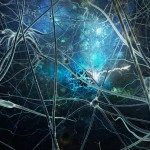Link to Pubmed [PMID] – 11125130
Nucleic Acids Res. 2001 Jan;29(1):336-9
Although a vast amount of life sciences data is generated in the form of images, most scientists still store images on extremely diverse and often incompatible storage media, without any type of metadata structure, and thus with no standard facility with which to conduct searches or analyses. Here we present a solution to unlock the value of scientific images. The Global Image Database (GID) is a web-based (http://www.gwer.ch/qv/gid/gid.ht m ) structured central repository for scientific annotated images. The GID was designed to manage images from a wide spectrum of imaging domains ranging from microscopy to automated screening. The annotations in the GID define the source experiment of the images by describing who the authors of the experiment are, when the images were created, the biological origin of the experimental sample and how the sample was processed for visualization. A collection of experimental imaging protocols provides details of the sample preparation, and labeling, or visualization procedures. In addition, the entries in the GID reference these imaging protocols with the probe sequences or antibody names used in labeling experiments. The GID annotations are searchable by field or globally. The query results are first shown as image thumbnail previews, enabling quick browsing prior to original-sized annotated image retrieval. The development of the GID continues, aiming at facilitating the management and exchange of image data in the scientific community, and at creating new query tools for mining image data.

